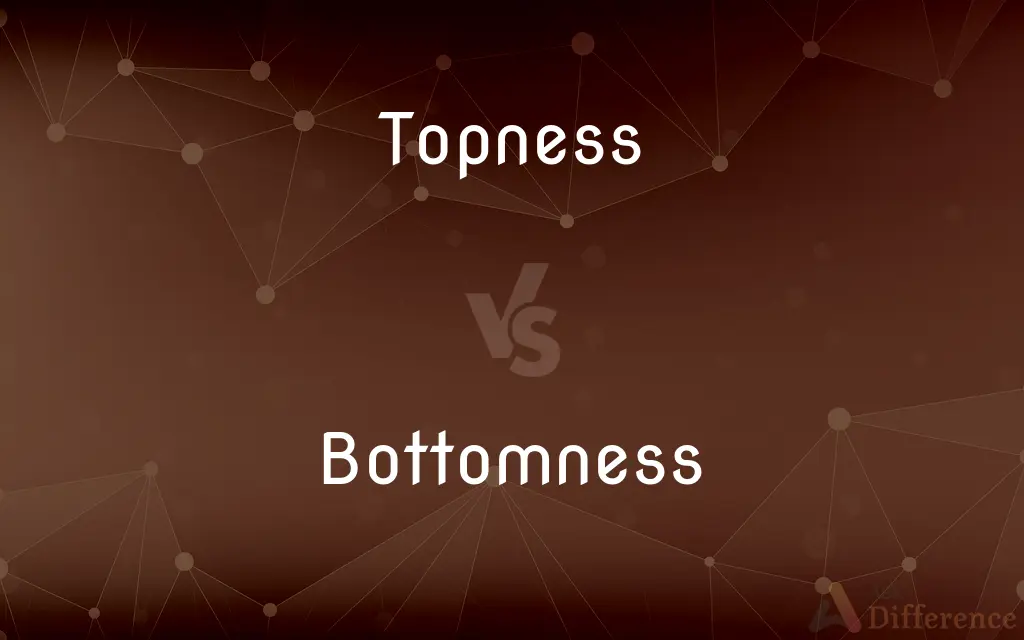Topness vs. Bottomness — What's the Difference?

Difference Between Topness and Bottomness
ADVERTISEMENT
Compare with Definitions
Topness
Topness (T, also called truth), a flavour quantum number, represents the difference between the number of top quarks (t) and number of top antiquarks (t) that are present in a particle: T = n t − n t ¯ {\displaystyle T=n_{\text{t}}-n_{\bar {\text{t}}}} By convention, top quarks have a topness of +1 and top antiquarks have a topness of −1. The term "topness" is rarely used; most physicists simply refer to "the number of top quarks" and "the number of top antiquarks".
Bottomness
In physics, bottomness (symbol B′ using a prime as plain B is used already for baryon number) or beauty is a flavour quantum number reflecting the difference between the number of bottom antiquarks (nb) and the number of bottom quarks (nb) that are present in a particle: B ′ = − ( n b − n b ¯ ) {\displaystyle B^{\prime }=-(n_{b}-n_{\bar {b}})} Bottom quarks have (by convention) a bottomness of −1 while bottom antiquarks have a bottomness of +1. The convention is that the flavour quantum number sign for the quark is the same as the sign of the electric charge (symbol Q) of that quark (in this case, Q = −1⁄3).
Topness
(physics) A quantum number of quarks and hadrons, determined by the number(s) of top quarks and antiquarks present. Symbol T.
Bottomness
(physics) A quantum number of quarks and hadrons, determined by the number(s) of bottom quarks & antiquarks present. Symbol B.
Share Your Discovery

Previous Comparison
List vs. Tuple
Next Comparison
Wheedle vs. Coax














































